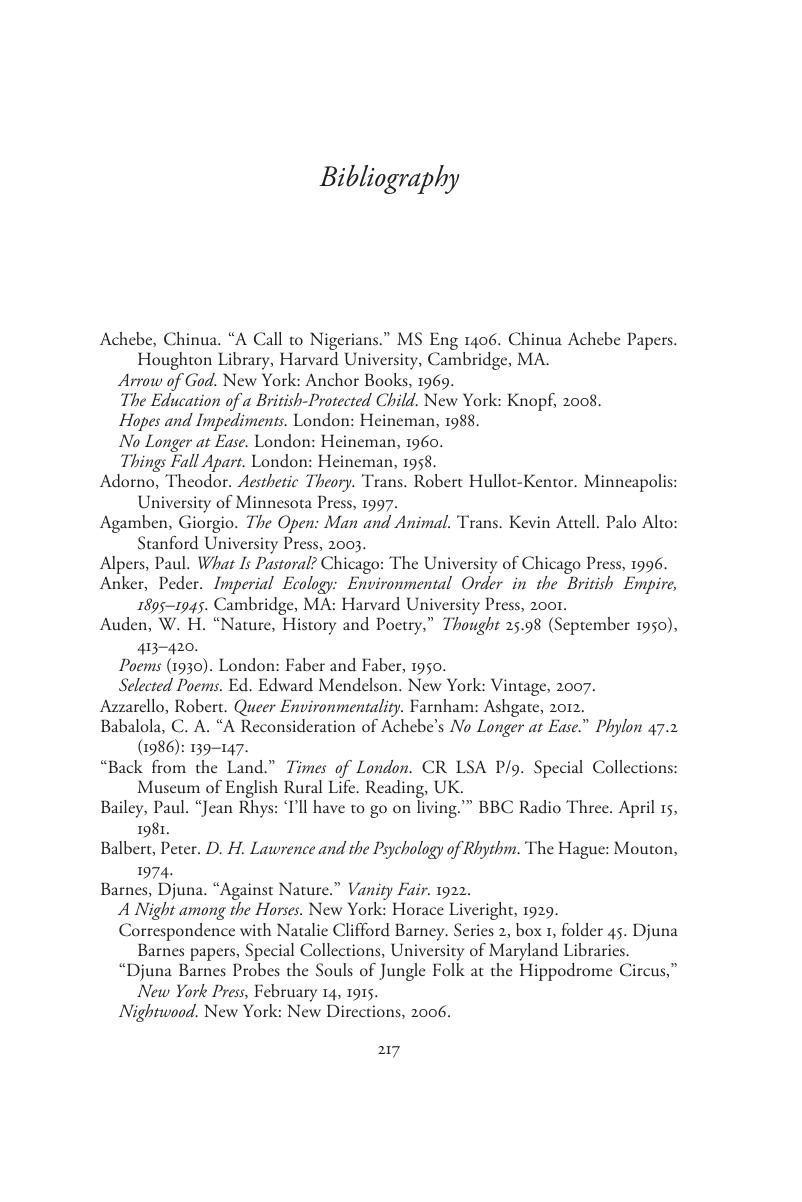Book contents
- Exhausted Ecologies
- Exhausted Ecologies
- Copyright page
- Contents
- Illustrations
- Acknowledgments
- Abbreviations
- Introduction: Places of Rest
- Chapter 1 Nature’s Reserves: Rural Exhaustion, Inertia, and Generative Aesthetics
- Chapter 2 Urban Environs: James Joyce and the Politics of Shared Atmosphere
- Chapter 3 Waste Lands: Dark Pastoral in T. S. Eliot, W. H. Auden, and Djuna Barnes
- Chapter 4 Uprooting Empire: Jean Rhys and Unrest in Imperial Centers
- Chapter 5 Decolonizing Ecology: Chinua Achebe’s New Forms of Unease
- Conclusion: The Limits of Modernist Regeneration
- Notes
- Bibliography
- Index
- References
Bibliography
Published online by Cambridge University Press: 09 January 2020
- Exhausted Ecologies
- Exhausted Ecologies
- Copyright page
- Contents
- Illustrations
- Acknowledgments
- Abbreviations
- Introduction: Places of Rest
- Chapter 1 Nature’s Reserves: Rural Exhaustion, Inertia, and Generative Aesthetics
- Chapter 2 Urban Environs: James Joyce and the Politics of Shared Atmosphere
- Chapter 3 Waste Lands: Dark Pastoral in T. S. Eliot, W. H. Auden, and Djuna Barnes
- Chapter 4 Uprooting Empire: Jean Rhys and Unrest in Imperial Centers
- Chapter 5 Decolonizing Ecology: Chinua Achebe’s New Forms of Unease
- Conclusion: The Limits of Modernist Regeneration
- Notes
- Bibliography
- Index
- References
Summary

- Type
- Chapter
- Information
- Exhausted EcologiesModernism and Environmental Recovery, pp. 217 - 229Publisher: Cambridge University PressPrint publication year: 2020



